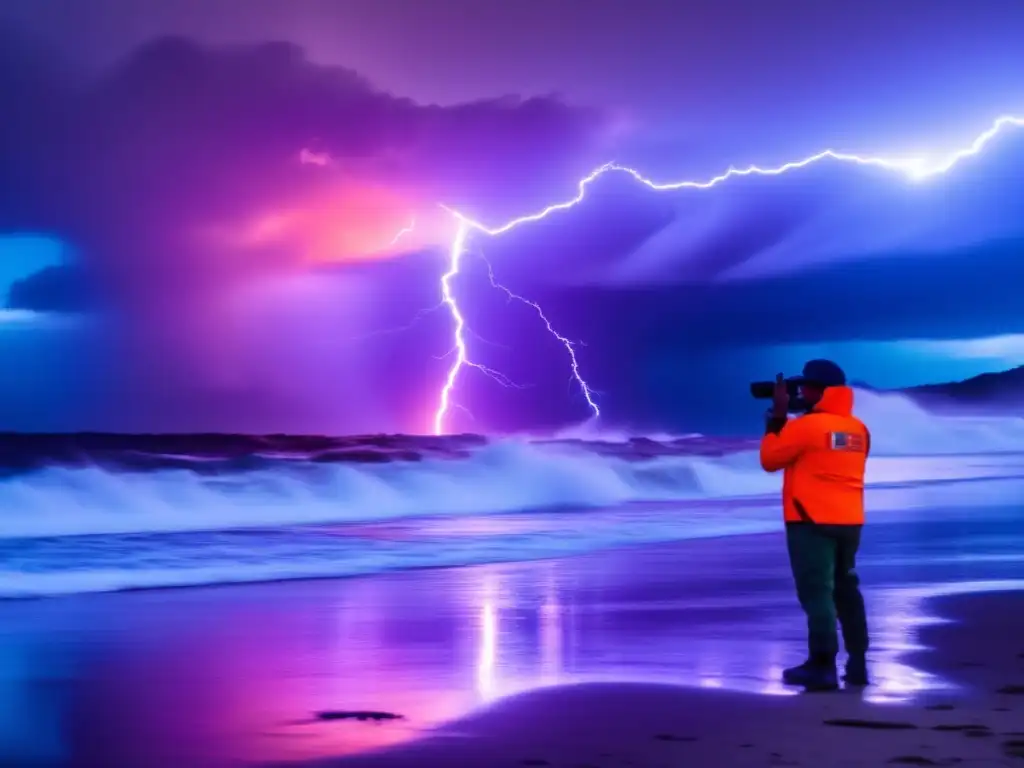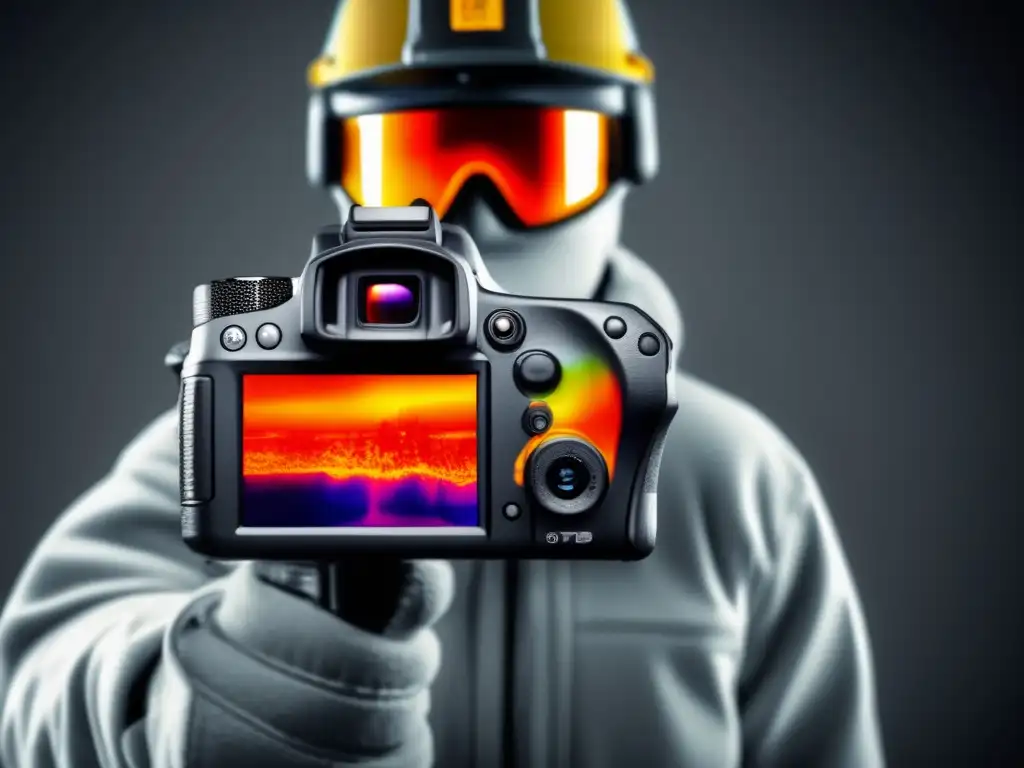Thermal Imaging Cameras

In-Depth Review of Thermal Imaging Cameras: Essential for Hurricane Preparedness
Introduction
Thermal imaging cameras (TICs) are essential tools for hurricane preparedness. They can detect heat signatures that are not visible to the human eye, making them incredibly useful in locating people who may be trapped, detecting hazards, or finding hotspots from potential fires. In this article, we will explore the features and benefits of TICs and their importance in hurricane preparedness.
Why Thermal Imaging Cameras is Essential for Hurricane Preparedness

The Role of Thermal Imaging Cameras in Safety and Survival
During a hurricane, there can be widespread power outages, fallen trees, and debris that can block roads and make it difficult to navigate in the dark. TICs can help rescue teams locate individuals who may be trapped or lost during the storm by detecting body heat signatures. This can be especially crucial in situations where individuals are buried under debris or stuck in flooded areas. TICs can also be used to detect potential hazards such as gas leaks or hotspots from potential fires.
Potential Scenarios Where Thermal Imaging Cameras is Needed
There are many scenarios where TICs can be useful during a hurricane. Here are a few examples:
- Locating individuals who may be trapped in collapsed buildings, flooded areas, or other hazardous zones.
- Identifying hotspots from potential electrical fires or gas leaks.
- Locating pets and livestock that may be hiding or lost during the storm.
- Assisting with search and rescue missions in areas that are difficult to navigate due to debris or flooding.
Features to Look for in a Thermal Imaging Cameras

Build Quality and Durability
When it comes to hurricane preparedness, having a reliable and durable TIC is essential. Look for a TIC that is built to withstand harsh weather conditions and can withstand drops from a reasonable height. Additionally, a TIC with an IP rating of at least 65 is ideal, as it provides protection against exposure to dust and water.
Functionality and Ease of Use
In an emergency situation, you need a TIC that is easy to use and provides clear and accurate images. Look for a TIC with intuitive controls and a high-resolution display screen. Additionally, a TIC that is lightweight and ergonomically designed will make it easier to carry and use for extended periods.
Battery Life or Alternate Power Sources
When choosing a TIC, consider the battery life and how long it will last in an emergency situation. Additionally, some TICs come with alternate power sources, such as USB charging or the ability to use standard AA batteries. Having a backup power source can be crucial during extended power outages.
Understanding the Different Types of Thermal Imaging Cameras

Mechanical Scanning TICs
Mechanical scanning TICs are the earliest versions of thermal imaging technology. They use a rotating mirror to direct the thermal sensor over the area being scanned. Mechanical scanning TICs have been mostly replaced by other types of TICs due to their lower image quality, slow scanning speed, and reliability issues.
Un-Cooled Focal Plane Array TICs
Un-cooled focal plane array (UFPA) TICs are the most common type of TIC used today. They contain an array of tiny sensors that detect heat signatures and can produce high-quality images in real-time. UFPA TICs require no cooling mechanism and are lightweight, making them ideal for use in handheld devices.
Popular Thermal Imaging Cameras Options in the Market

Here are three popular TIC options:
FLIR ONE Pro
The FLIR ONE Pro is a thermal imaging camera that can be attached to a smartphone or tablet. It offers a 160 x 120 resolution and a temperature range of -4°F to 752°F. The FLIR ONE Pro also has a built-in rechargeable battery that lasts up to one hour of continuous use.
Seek Reveal Pro
The Seek Reveal Pro is a handheld TIC that offers a 320 x 240 resolution and a temperature range of -40°F to 626°F. It also has a built-in rechargeable battery that lasts up to four hours of continuous use.
FLIR K1
The FLIR K1 is a lightweight, handheld TIC designed for firefighters and first responders. It offers a 160 x 120 resolution and a temperature range of -4°F to 932°F. It also has a built-in rechargeable battery that lasts up to five hours of continuous use.
Frequently Asked Questions

-
What is the difference between thermal imaging cameras and night vision cameras?
Thermal imaging cameras detect heat signatures, while night vision cameras enhance visible light. Thermal imaging cameras do not require any ambient light to produce images, making them ideal for use in dark or low-light conditions.
-
Can thermal imaging cameras see through walls?
Thermal imaging cameras cannot see through walls. They can detect heat signatures emitted from objects, but these generally cannot penetrate walls or other solid objects.
-
How do I use a thermal imaging camera?
Most thermal imaging cameras are relatively simple to use. You simply point the camera at the object you want to scan and press a button to capture an image. Some TICs may have advanced settings that allow you to adjust the temperature range or color palette.
-
Can thermal imaging cameras detect gas leaks?
Yes, thermal imaging cameras can detect gas leaks. Gas leaks emit excess heat, which can be picked up by TICs.
-
Do thermal imaging cameras require any special training to use?
Most TICs are relatively intuitive to use and do not require any special training. However, it is always a good idea to read the user manual and understand the different features and settings before using the camera in an emergency situation.
Conclusion
Thermal imaging cameras are essential tools for hurricane preparedness. They can help locate individuals who may be trapped or lost, identify potential hazards, and assist with search and rescue operations. When choosing a TIC, look for durability, functionality, and battery life or alternative power sources. Popular TIC options include the FLIR ONE Pro, Seek Reveal Pro, and FLIR K1. If you live in a hurricane-prone area, it is important to be prepared and have the necessary tools on hand to stay safe during a storm.
Engage with hurricaneinsider.org by subscribing and sharing this article on social media. If you have any further information or questions, leave them in the comments section below.
If you want to discover more articles similar to Thermal Imaging Cameras, you can visit the Hurricane Preparedness Products category.
Leave a Reply




Articulos relacionados: